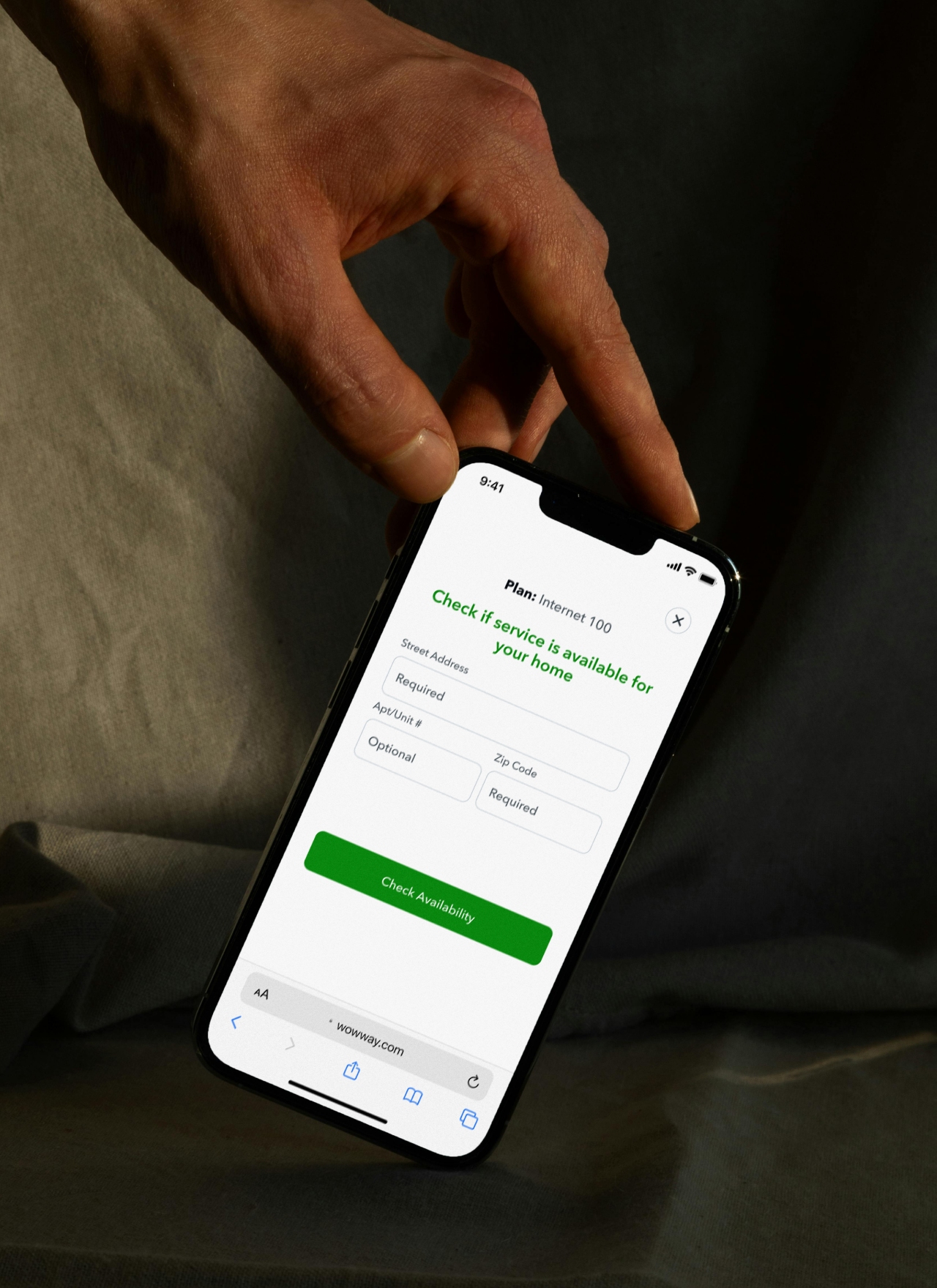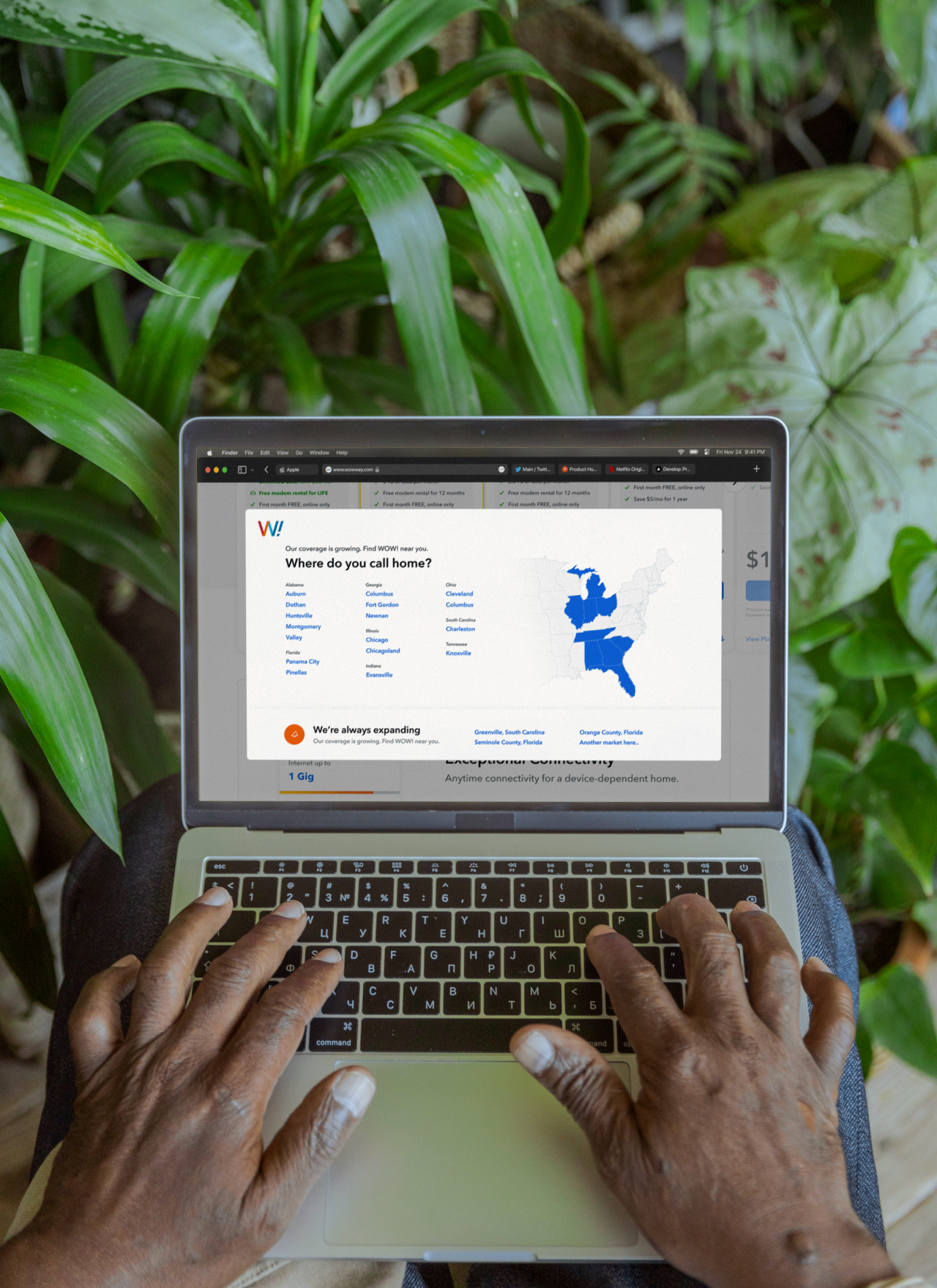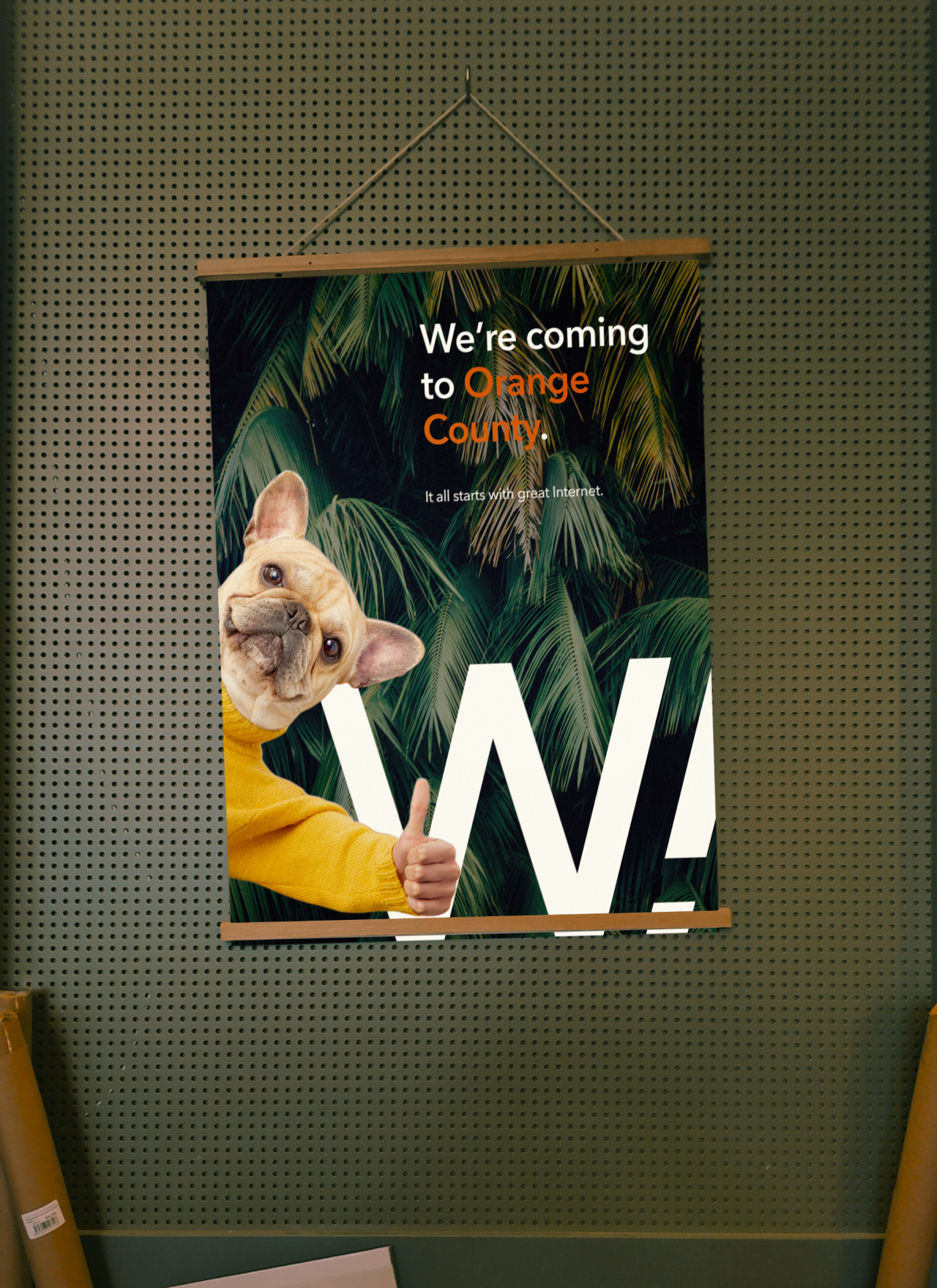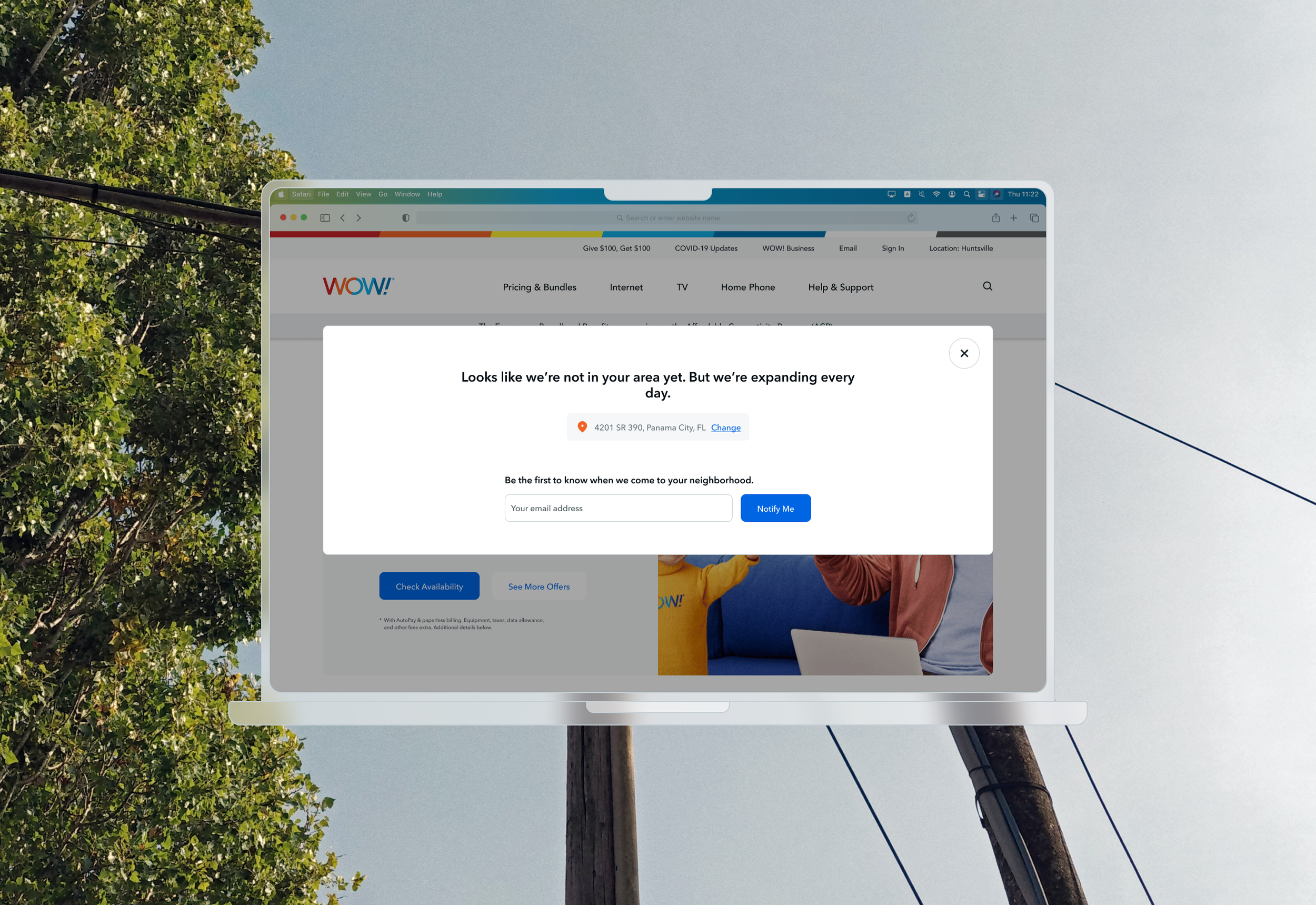WOW! Internet
Experience Design
Product Design
Design System
Project
Year
Localization strategy and redesign
May – Aug 2022
Website
Role
Problem
Due to limited national coverage, WOW! was frustrated with their website’s inability to ensure existing and prospective customers that their product would be available in the region or area selected. From guaranteeing internet speed to service availability, customers should have been able to confirm early on in the customer journey if WOW! was compatible with their address. WOW! Internet’s initial “Check Availability” CTA pushed users to the checkout flow without doing a service check.
Solution
We created an address checker and introduced localization on the home page allowing customers to input their ZIP code and confirm available services. Introducing this feature at the beginning of the shopping experience allowed for fewer drop-off rates further down the shopping journey. We also re-imagined the customer journey and focused on eliminating dead-ends with a clearer, more intuitive flow.
Reflection
The main purpose of introducing a prominent address checker was for customers to get a localized and personalized experience as they continued on their shopping journey. Additionally, it allowed prospective customers living in unserviceable locations to confirm incompatibility early in their shopping experience, giving them alternatives and reducing non-conversions. To ensure our solution was tailored to WOW!’s challenges, we explored how customer types, user journeys, and use cases would be impacted and put an emphasis on having “no dead ends”.
Key points
Identifying the different customer types and directing them to the relevant journey.
We identified three main customer types— (1) returning customers, (2) new customers, and (3) unserviceable customers. Each customer type will have a designated journey as they continue on the site, so we made sure the address checker identifies them so they are redirected accordingly and are able to move through their experience with reduced barriers.
01
Creating databases so the address checker can parse through the data quickly.
To eliminate the friction for customers and intelligently utilise the address check, we identified two main databases that needed to be created: (1) addresses that are serviceable and (2) addresses for existing customers. If the address is recognised as an existing one, users will be prompted to sign in or specify they’re moving. Addresses not in the existing customers’ database will be identified as serviceable— redirecting customers to move through the shopping journey, or unserviceable so prospects know that they are ineligible.
02
Optimizing localization for new prospects and curating a personal experience.
With the location identified, customers should have a personalized shopping experience moving forward. All speeds, prices, deals, promotions, and services should be available and accurate for their address. Customers should not receive an “unavailable at your location” prompt after successfully going through the address check.
03
Designing for a no-dead end experience.
We made sure each customer type had a unique flow that allowed them to continue on their journey. We focused on unserviceable prospects, as having a “next step” despite inability to convert can still result in customer satisfaction. Whether it was allowing customers to be notified when WOW! would be available in their area or recommending their location to be part of WOW! Internet’s coverage, it was important to remind users that their browsing experience mattered, regardless if it ended in conversion.
04







